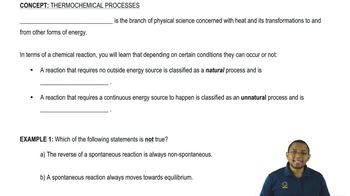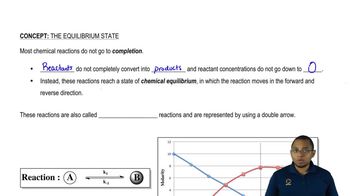Textbook Question
What is meant by the term 'chemical equilibrium'? Must amounts of reactants and products be equal at equilibrium?
363
views
 Verified step by step guidance
Verified step by step guidance Verified Solution
Verified Solution



 3:42m
3:42mMaster Chemical Equilibrium Concept 1 with a bite sized video explanation from Jules Bruno
Start learning